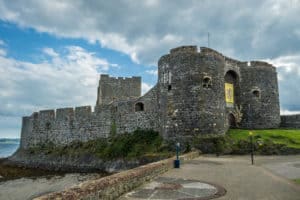The Battle of Clontarf: Unveiling the Myth and Reality
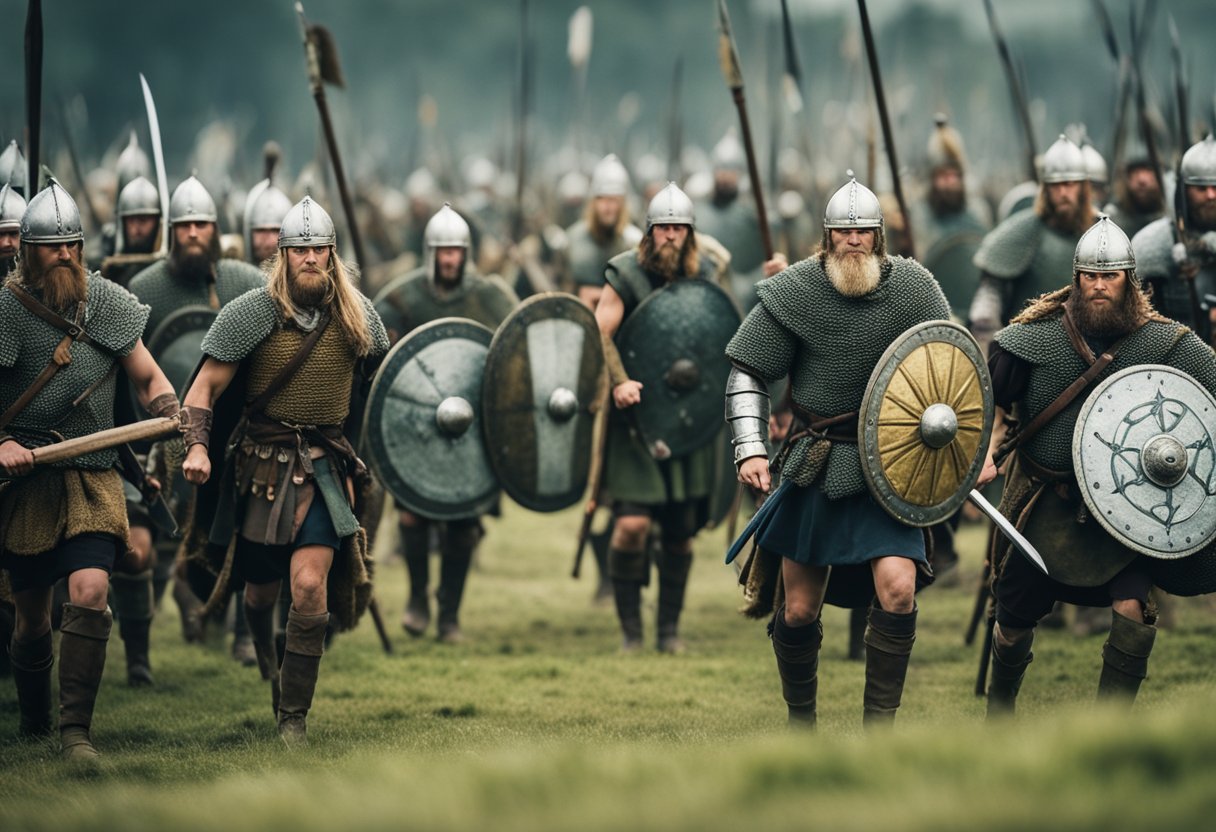
Updated On: March 16, 2024 by Maha Yassin
On 23 April 1014, the Battle of Clontarf is one of the most significant confrontations in Irish history. This historic battle was waged near the present-day Dublin suburb of Clontarf, pitting the forces of the High King of Ireland, Brian Boru, against a formidable alliance of rebellious Irish kingdoms and Viking contingents. The event was not merely a violent clash for control and dominion but also marked a turning point in the Irish struggle against foreign influence. Our exploration of this pivotal moment unravels the tapestry of history and legend that has shrouded the battle for over a millennium.
While the battle is recorded in various historical sources, its significance has extended well beyond the military outcome. It has been enveloped in a mythic aura for centuries, influencing cultural expressions and national identity. Clontarf’s cultural significance and legacy have resonated through time, often taking on new shapes in Ireland’s collective memory and storytelling. Our analysis will delve into the era’s geopolitical dynamics, key figures’ profiles, and the cultural impact that followed. We aim to present a comprehensive view of how the Battle of Clontarf has been remembered in history and retold in legend.
Historical Context of the Battle
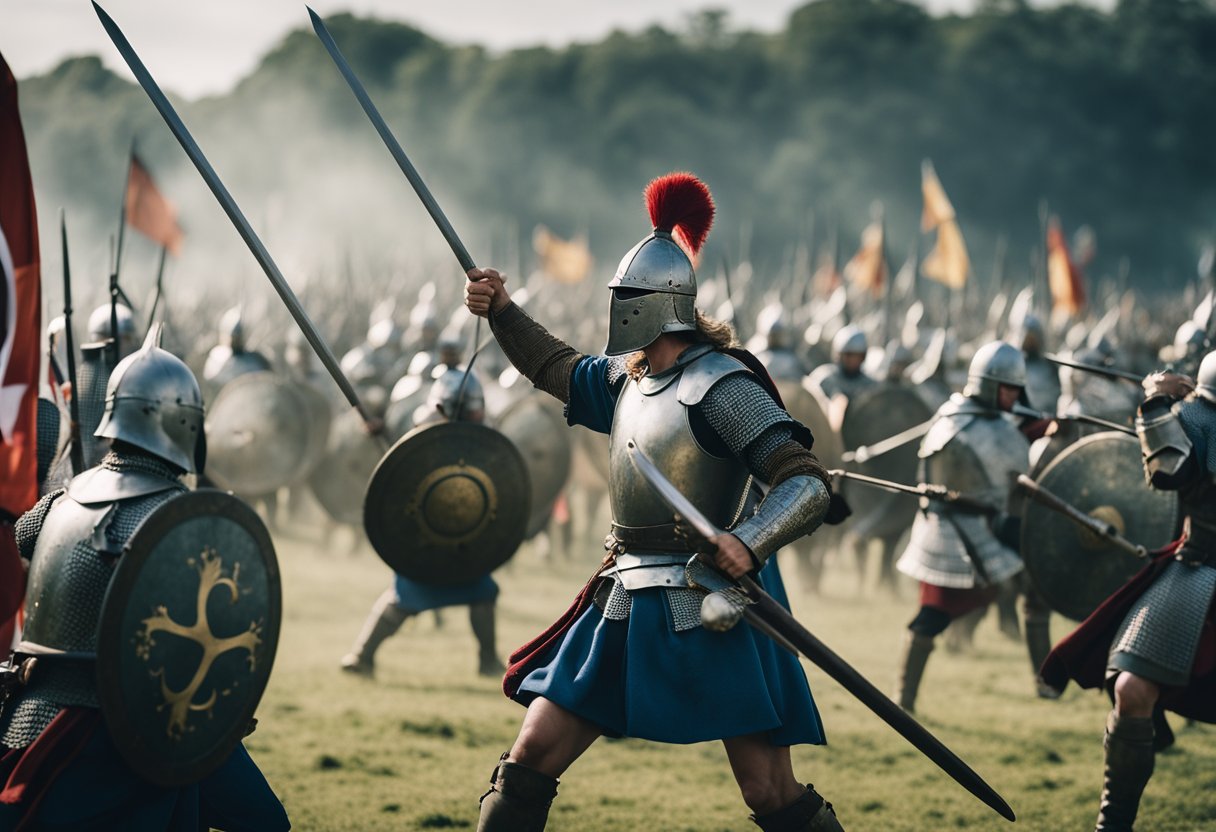
In the lead-up to the Battle of Clontarf, Ireland experienced profound societal and political changes, influenced heavily by the incursions and eventual settlements of Viking groups. The face of Ireland on the eve of the battle was one where Viking and Irish societies were intertwined through conflict, trade, and cultural exchanges.
Ireland Before the Battle
Before the battle, Ireland was not a single political entity but a patchwork of kingdoms and dynasties, often at odds with one another. The most powerful figure to emerge from this fractious political landscape was Brian Bórú, who became the High King of Ireland. His rule marked a period of relative unity and strength in Irish politics, with his power extending even into areas like Dublin, a significant Viking stronghold.
Viking Presence in Ireland
The Vikings began raiding Ireland in the late 8th century, and over time, their presence evolved from raiders to settlers, traders, and influential political players. They founded several key trading towns, including Dublin, a thriving port and a centre of Norse power in Ireland. These Norse-Gaelic kingdoms integrated into Irish culture in many ways, even as they maintained distinct identities and international connections. The history of Viking Ireland is not solely one of pillage and warfare; it is also studded with vibrant trade and a melding of Scandinavian and Gaelic art forms.
Profiles of Key Figures
In the historical mosaic of the Battle of Clontarf, the tapestry of war is vivid with the presence of prominent leaders whose actions shaped the course of the conflict. We now focus on the key figures who played pivotal roles in this legendary encounter.
Brian Boru: High King of Ireland
Brian Boru, the High King of Ireland, was the central Irish figure at Clontarf. Born to royal lineage in the Kingdom of Munster, Boru’s quest for control eventually led him to secure the high kingship. Despite the fragmentation within Ireland, Brian Boru’s reign saw a considerable reduction in the influence of Viking settlers who had firmly established themselves, particularly in the east of Ireland. At Clontarf, he sought a military victory and a stabilisation of Irish power.
Viking Leaders and Allies
On the opposing side stood a coalition of forces led by the Norse-Gaelic King of Dublin, Sigtrygg Silkbeard, and his allies, including the King of Leinster and various Norse adventurers. Among these was Brodir of the Isle of Man, a fierce warrior known for his hostility against Brian. Sigurd, Earl of Orkney, contributed to the Norse leadership, whose participation in the battle represented the extensive reach of Viking connections. These figures, alongside other powerful Viking captains, aimed to curb the rising dominance of King Brian and protect their territories and interests in Ireland.
Lead-Up to the Clash

As we examine the events that prefaced the Battle of Clontarf, we find a tapestry woven with intricate political machinations and escalating rivalries.
Political Tensions and Rivalries
The island of Ireland during the 10th and 11th centuries was a landscape marked by dynamic power struggles. The rivalry between the Kingdom of Leinster and the Kingdom of Munster is key to understanding the lead-up to the clash at Clontarf. The power of the Irish kings was a central force, and regional dominion over areas such as Meath and Ulster played crucial roles in their contentious relationships.
Significant in the backdrop of Irish politics was the Battle of Glenmama. Fought in 999, Glenmama was a clash where Brian Boru of Munster decisively defeated the combined forces of Leinster and Norse Dublin. This victory bolstered Munster’s authority and amplified tensions, particularly with Leinster, as rulers vied for supremacy.
Irish politics then was about regional superiority and the complex interactions with Norse Gaels in urban centres like Dublin. These Norse Gaels were often integrated within Irish kingdoms, albeit with a degree of autonomy under their leaders. Under its powerful ruler, the Norse kingdom of Dublin formed a pivotal alliance with the King of Leinster, further intensifying the atmosphere charged with potential conflict.
Our grasp of this period reveals that authority was a fragmented concept, with each kingdom jealously guarding and seeking to expand its power. The stage was set for a decisive confrontation, culminating in a battle that would be a defining moment in Irish history.
The Battle of Clontarf in Detail
In this segment, we’re delving into the pivotal moments of the Battle of Clontarf and the strategic movements that determined its outcome.
The Battle Unfolds
On Good Friday, 23 April 1014, one of the most significant confrontations in Irish history, the Battle of Clontarf, commenced. The Gaelic forces, led by the High King of Ireland, Brian Boru, faced an alliance of rebellious Irish factions from Leinster and Vikings. The latter were mercenaries and allies drawn from regions including Scotland and the Norse-Gaelic kingdom of the Isles.
Tactics and Troop Movements
Troop formations and tactics played a crucial role in unfolding the Battle of Clontarf. Brian’s forces were arrayed on the fields of Clontarf, with the River Tolka at their rear, creating a natural barrier against retreat. Renowned Viking leaders such as Sigurd of Orkney joined the enemy lines, adding to the already formidable opposition.
The Gaelic and Viking troops engaged in ferocious combat that ebbed and flowed with the tactical manoeuvres of seasoned warriors. The Annals of Ulster later chronicled this legendary encounter, reflecting the scale and ferocity of the battle, which signalled the culmination of Viking influence in Ireland and a turning point for Gaelic sovereignty.
Aftermath and Consequences
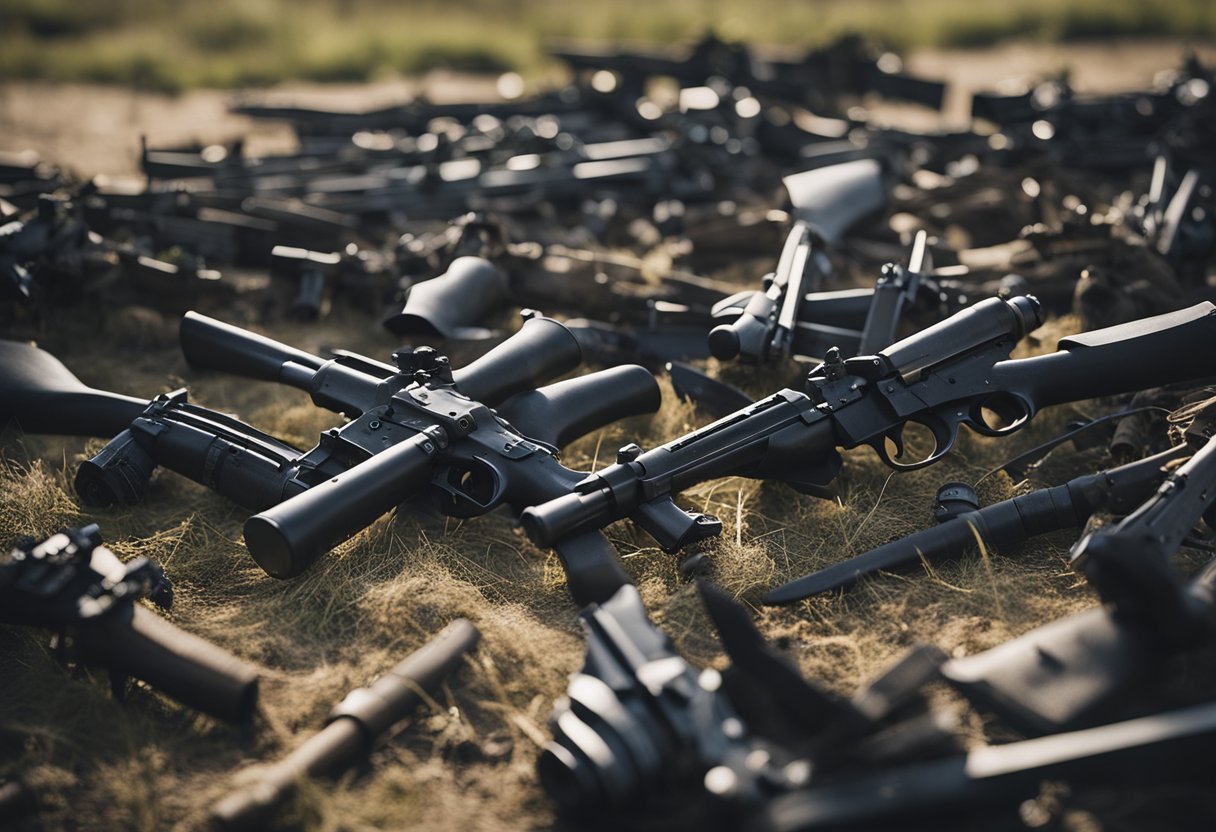
The Battle of Clontarf dramatically shifted the power dynamics within Ireland, marking both an immediate impact and ushering in long-term effects that resonate through Irish history.
Immediate Impact on Ireland
The aftermath of the Battle of Clontarf saw a significant reduction in Norse power in Ireland. With the Irish army victorious, the high king of Ireland, Brian Boru, although killed during the battle, had secured a triumph that would limit Viking influence and bolster Irish autonomy. This victory, however, came at a substantial cost to the Dalcassians and their allies, as many of the leading nobility of Ireland died on the battlefield, including Brian’s son, Murchad. Various chieftains and factions vied for control in the power vacuum that followed, leading to increased localised conflict.
Long-Term Effects
Over time, the battle’s implications extended far beyond the immediate shifts in power. In the centuries that followed, the nature of Irish kingship evolved, with regional kings engaged in frequent contests for the title of High King. The Norse cities, including Dublin under the rule of Sigtrygg Silkbeard, eventually assimilated more fully into Irish society, contributing to a cultural and economic fusion between the Gaelic and Norse populations. Furthermore, the Battle of Clontarf has been imbued with legendary status in Irish history, symbolising the triumph of the native Irish over foreign invaders and evolving into a potent nationalistic narrative.
Cultural Significance and Legacy
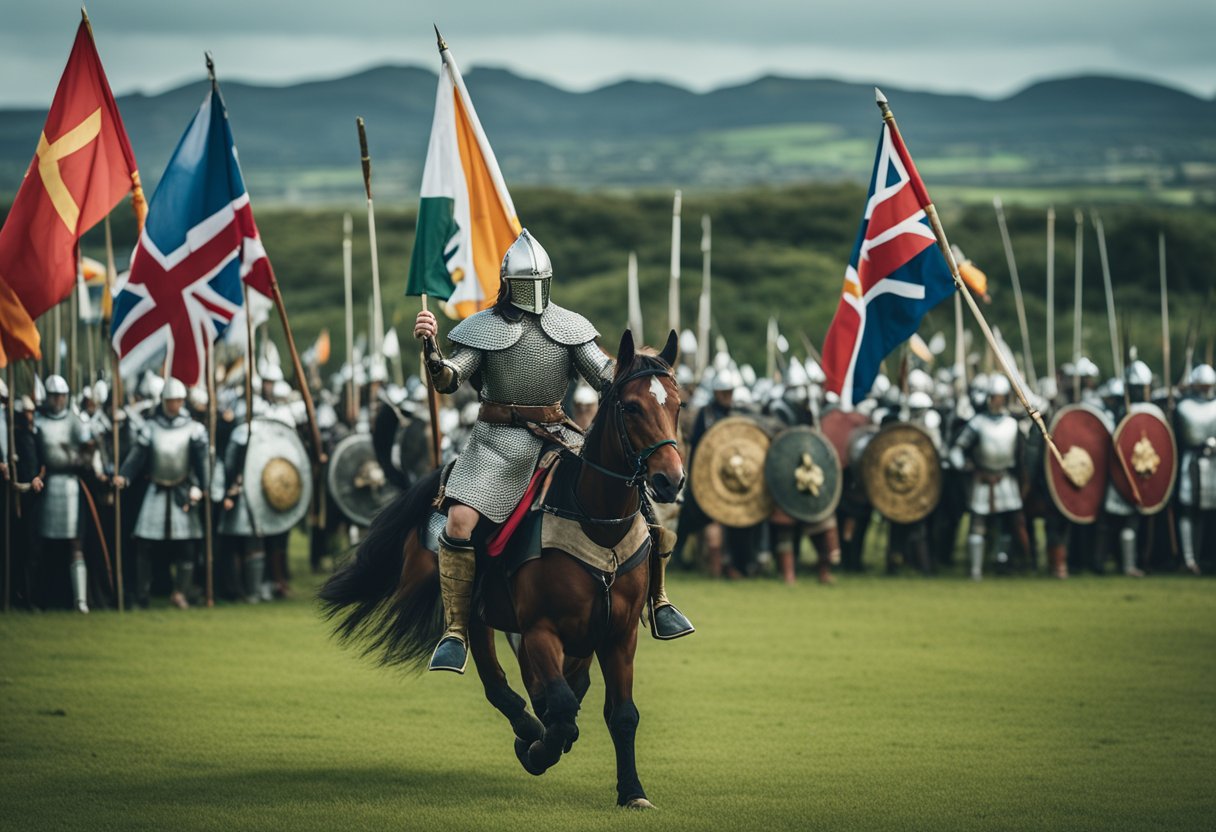
The Battle of Clontarf’s impact extends far beyond the battlefield; it’s woven into the cultural fabric of Ireland, influencing art and national identity.
The Legend of Brian Boru
Brian Boru is immortalised as a national hero who epitomised Irish resistance against foreign invasion. His defeat of the Viking coalition on Good Friday 1014 has been enveloped in historical myths, establishing him as an icon of cultural exchange. The saga of Brian Boru resonates in art, with portrayals spanning from ancient manuscripts to modern-day paintings, all celebrating the legendary high king.
Modern Interpretations
Interpretations of the Battle of Clontarf have evolved with time. In the contemporary realm, the battle and Brian Boru’s role are subjects of extensive academic scrutiny and cultural re-evaluation. We witness an interplay of fact and fiction as historians sift through the layers of legend while artists and writers draw inspiration from the pivotal conflict that shaped the nation. The tale’s endurance exemplifies its profound role in Irish cultural consciousness.
Evaluating Historical Sources
When revisiting the momentous Battle of Clontarf, it’s crucial to scrutinise the available historical sources to discern fact from embellished legend.
Contemporary Accounts
Contemporary sources such as the Annals of Inisfallen provide a near-time record of events; these are invaluable for offering insights from the period in question. However, we must consider that they often combine fact with folklore, which can influence our understanding of past events. The Annals of Ulster are another example, as they are thought to be relatively reliable due to their chronological reporting of events, yet they are not completely immune to the biases of their time.
Annals and Chronicles
Medieval historians had access to various annals and chronicles that shaped their interpretation of the Battle of Clontarf. These historical narratives, compiled over the years following the event, suggest a heroic status for Brian Boru, but they may also contain some myth-making. They weave together the reported facts with their era’s cultural and societal perceptions, which affords us richer, yet more complex, material for further reading and evaluation.
Historians use these sources as starting points for their accounts, cross-referencing and verifying details to present as accurate a historical narrative as possible. Nevertheless, blending history and legend remains a persistent challenge in dissecting the factual history of the Battle of Clontarf from its legendary embellishments.
Viking Influence Beyond Warfare
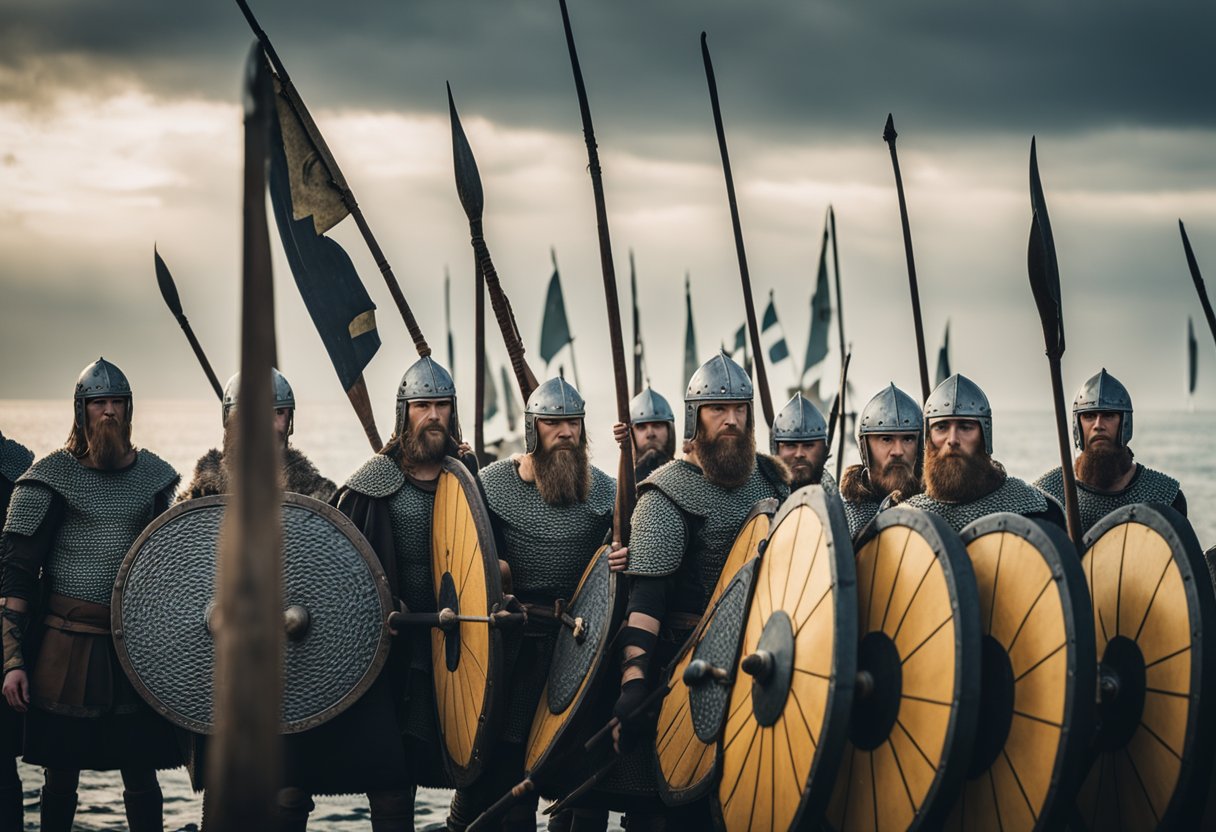
The Vikings are renowned not only for their conquests but also for their contributions to trade and cultural development. We explore the facets of their influence that transcended the battlefield, primarily focusing on their economic impact and the mingling of cultures that ensued.
Trade and Economy
The Vikings established extensive trade networks that stretched across and beyond Europe, with viking ports acting as hubs for commerce. They were not only fierce warriors but also astute traders and merchants. Establishing trading contacts fostered economic links with the Byzantine Empire and the Caliphate, tapping into the wealth of the Silk Roads. Significant trade items included textiles, honey, weapons, and slaves. They also hired out as Viking mercenaries, providing military services for payment. The intermarriage between Vikings and locals often cemented these trade relationships, creating alliances that boosted economic stability and growth.
Cultural and Genetic Legacy
Cultural exchange was another significant aspect of Viking interaction with other societies. Structures of governance, art, and technology were shared, leading to advancements and changes in societal norms. The Vikings left a lasting legacy through stories and legends and tangible genetic imprints in the populations they encountered. Intermarriage played a crucial role in blending Viking genes with other European communities. This melding of lineages is evident today, indicating that their impact went far beyond their era of conquest and colonisation.
Geopolitical Dynamics of the Era
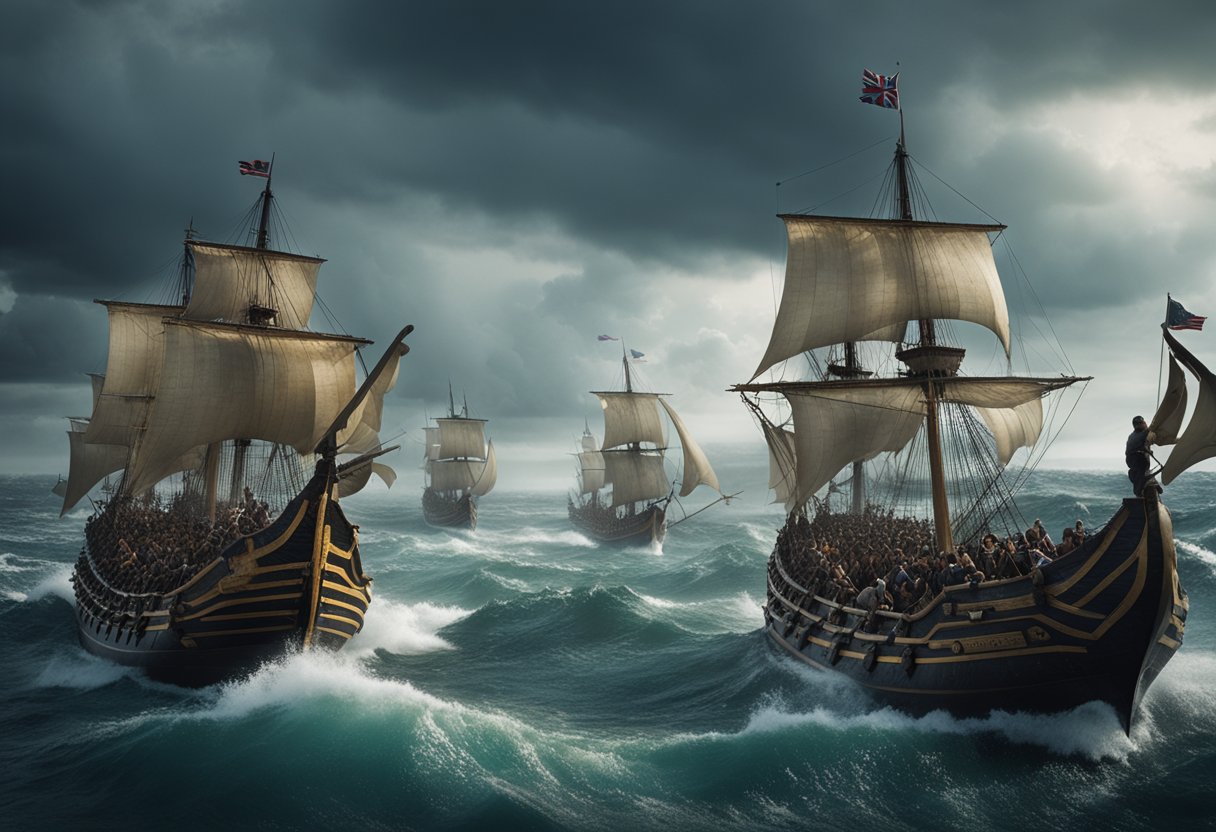
The Battle of Clontarf unfolded within a complex network of shifting alliances and the expansive ambitions of regional kings. Internal strife among Irish kingdoms and the impact of external Norse forces set the stage for this historic clash.
Alliances and Enemies
The Irish political landscape was fragmented, with numerous kings vying for power. The King of Leinster had formed a rebellious alliance with Norse-Gaelic factions against the High King of Ireland, Brian Boru. Boru, also the King of Munster, had forged alliances with other Irish kingdoms, including Ulster, to legitimise and bolster his rule. On Good Friday in 1014, these tensions came to a climax at Clontarf, with Norsemen from Scandinavia, the Isle of Man, Orkney, and the Hebrides aligning with Leinster against Boru’s coalition.
Territorial Ambitions
Dublin, ruled by the Norse-Gaelic kingdom, was a pivotal Norse stronghold facilitating Norse military ambitions and serving as a valuable trading hub. Control of Dublin was central to Boru’s strategy to consolidate his power in Ireland. The territorial reach of Brian Boru reflected an ambition not only to rule Ireland but also to curb the influence of Norsemen who had established themselves in coastal strongholds. Norse settlements, including those in the Isle of Man, Orkney, and Hebrides, were instrumental in the Norse control of maritime routes between Ireland and Scandinavia, thus the conflict at Clontarf had broad geopolitical implications beyond Irish soil.
Archaeological Insights
As we examine the Battle of Clontarf, we recognise that archaeological discoveries provide tangible links to the past. These findings shed light on Dublin Bay‘s role in trade, the weaponry used in the conflict, and signs of national identities and political developments during the era.
Artefacts and Battlefield Relics
We’ve unearthed various artefacts offering insights into the weapons employed by the Vikings and the Gaelic forces. Items such as sword fragments, axe heads, and shield remnants inform us about the combatants’ martial capabilities and metallurgical technologies. Beyond weapons, personal adornments and coins help piece together the broader picture of trade networks and cultural exchanges of the time.
The presence of Dublin Bay in the narrative points to its strategic importance, emphasising how control over this trade hub was a critical factor in the political and economic landscape of 11th-century Ireland.
By studying these relics, particularly those that exhibit elements of Gaelic art, we gain a deeper understanding of the cultural significance of the battle. For instance, the artistry found in the metalwork reflects an intertwining of national identity and martial pride—a fusion of utility and expression.
In summary, archaeological evidence from the Battle of Clontarf plays a crucial role in unravelling the multi-faceted story of this historic encounter, bridging the gap between history and legend.
Legends and Myths Retold
In the tapestry of Irish history, the Battle of Clontarf stands out for its historical significance and the legends and myths it has inspired. These stories have been shaped by centuries of Gaelic tradition and cultural exchange, often blurring the lines between fact and fiction.
Folk Tales and Ballads
We are often captivated by the folk tales and ballads that paint Brian Boru as a heroic figure of Christian leadership, embodying the virtues of Gaelic nobility in the face of foreign threats. The Vikings, historically known for their raids and settlements in Ireland, are portrayed in these narratives as formidable adversaries whose presence ultimately contributed to Ireland’s rich tapestry of national identities.
Historical myths surrounding the Battle of Clontarf have evolved through generations, sometimes augmenting the roles of Irish forces and their Viking counterparts. This cultural exchange resonates in the stories passed down, celebrating the battle as a pivotal moment in Irish history.
Ballads recited in Irish households and public houses alike often recount the valour of Brian Boru and his men, creating an enduring legacy that has become a foundational element of Irish national identity. These tales serve not only as entertainment but also as a vessel for historical memory, where the reverence for past deeds and leaders helps to shape Ireland’s perception of its past.
Frequently Asked Questions
In this section, we explore the pivotal aspects of the Battle of Clontarf, addressing common queries about its causes, participants, and enduring legacy.
Why was the Battle of Clontarf fought?
The Battle of Clontarf was fought to break the power of the Norsemen, or Vikings, who had been exerting influence and raiding Gaelic Ireland for over two centuries. Irish kingdoms sought to claim sovereignty and expel Norse influence.
Which side emerged victorious in the Battle of Clontarf?
Brian Boru’s forces won the Battle of Clontarf. Despite facing formidable opposition from various Norse and Irish factions, Boru’s army was ultimately successful, though at great cost, including Brian’s life.
What were the wider implications of the outcome of the Battle of Clontarf?
The outcome led to a significant decline in Norse power in Ireland while simultaneously consolidating the Gaelic Irish dominance. It marked a turning point in Irish history, reducing external influences and reshaping political power structures.
Which groups were involved in the combat at the Battle of Clontarf?
Combat at the Battle of Clontarf involved several groups: the Irish forces led by High King Brian Boru, his Munster allies, and those from the North of Ireland, pitted against the Leinstermen, the Norsemen of Dublin, and Viking mercenaries from afar, like the Orkney Islanders and others.
Where exactly did the Battle of Clontarf take place?
The Battle took place near the modern Dublin suburb of Clontarf, on a plain stretching between the River Tolka and woodland near Dublin at the time.
Can you list notable figures who perished during the Battle of Clontarf?
High King Brian Boru was among the notable figures who perished. His death occurred post-battle in his tent. Mórdha, King of Leinster, and Sigurd, Earl of Orkney, also fell during the fighting.


